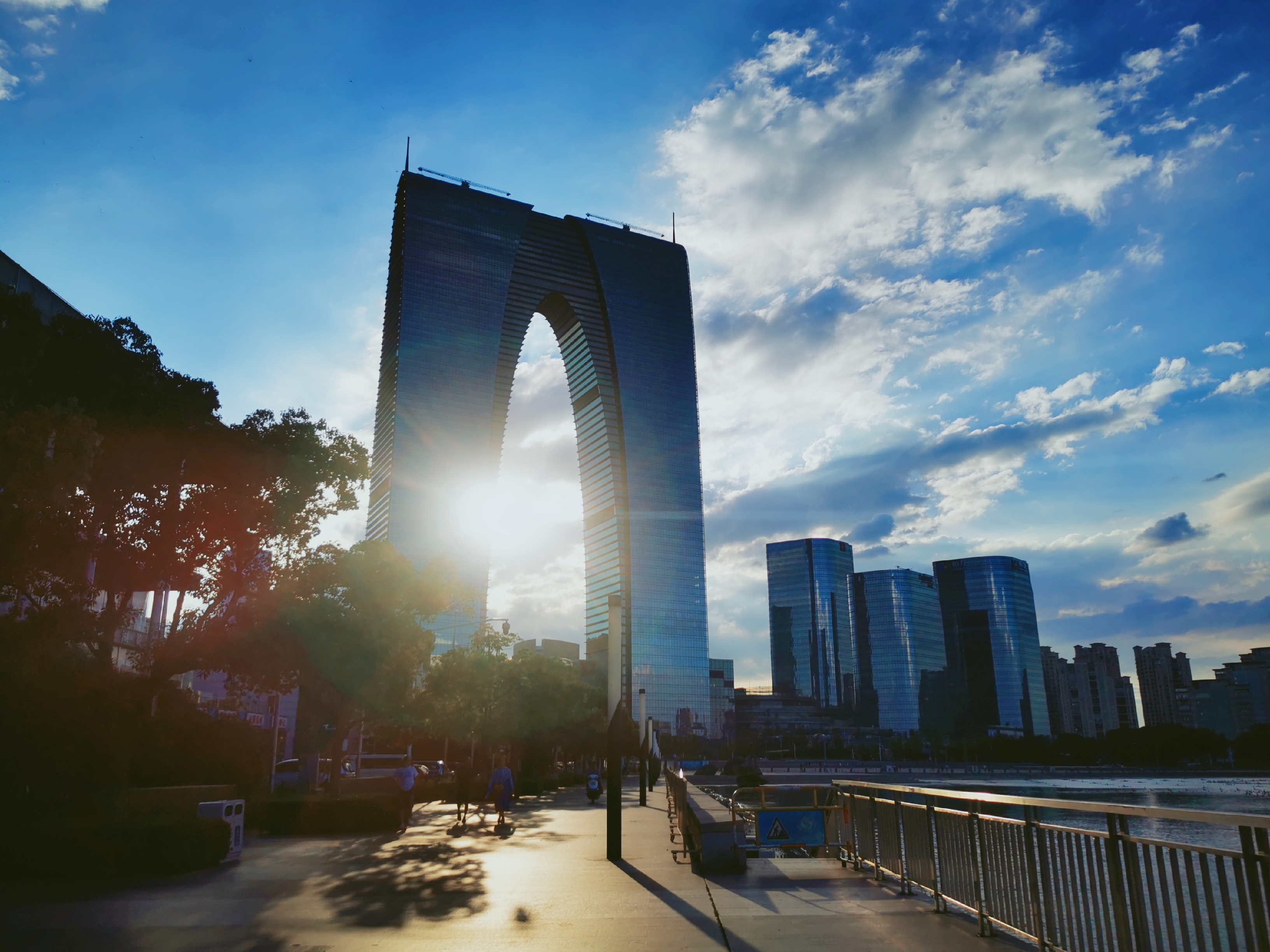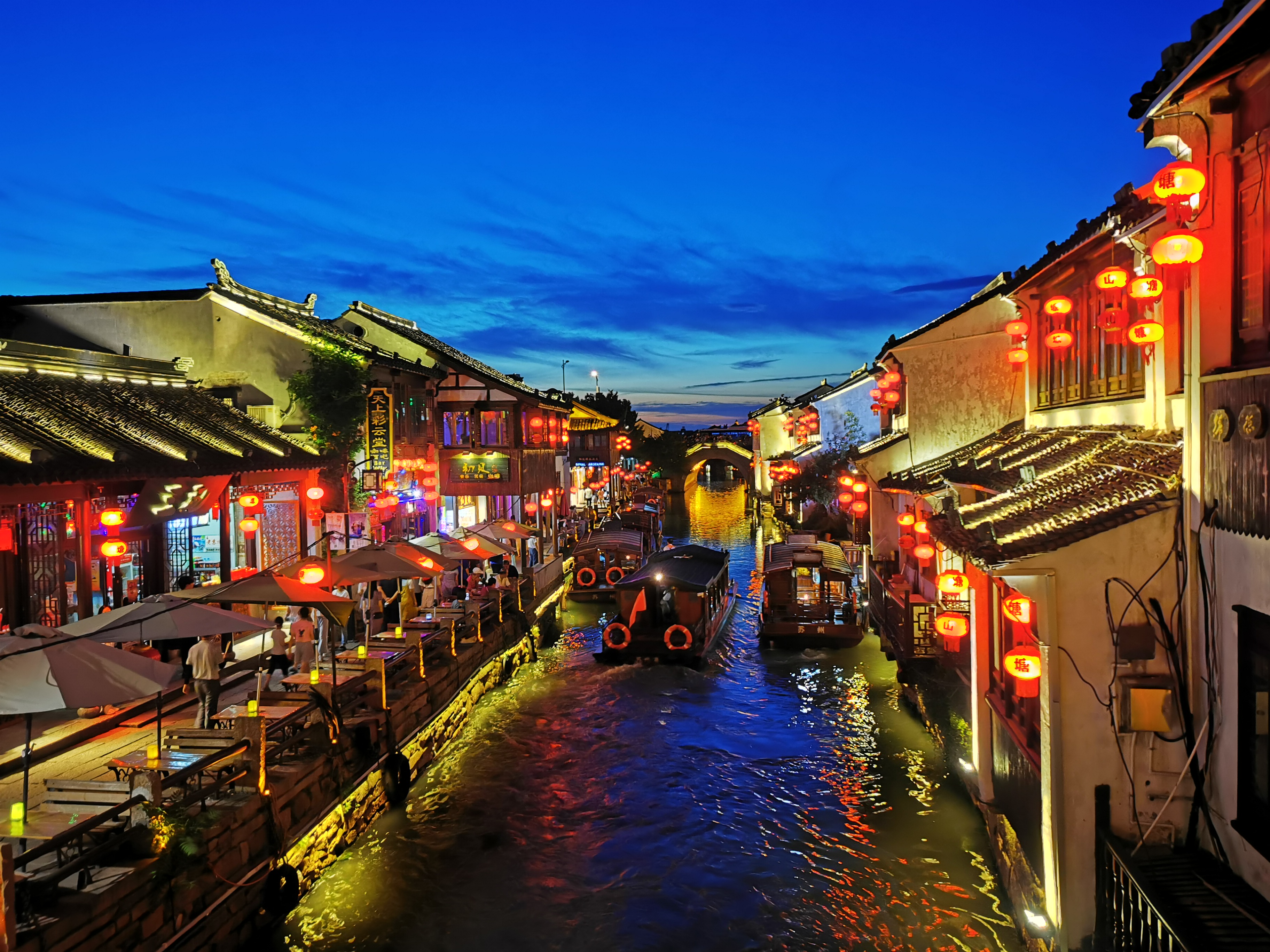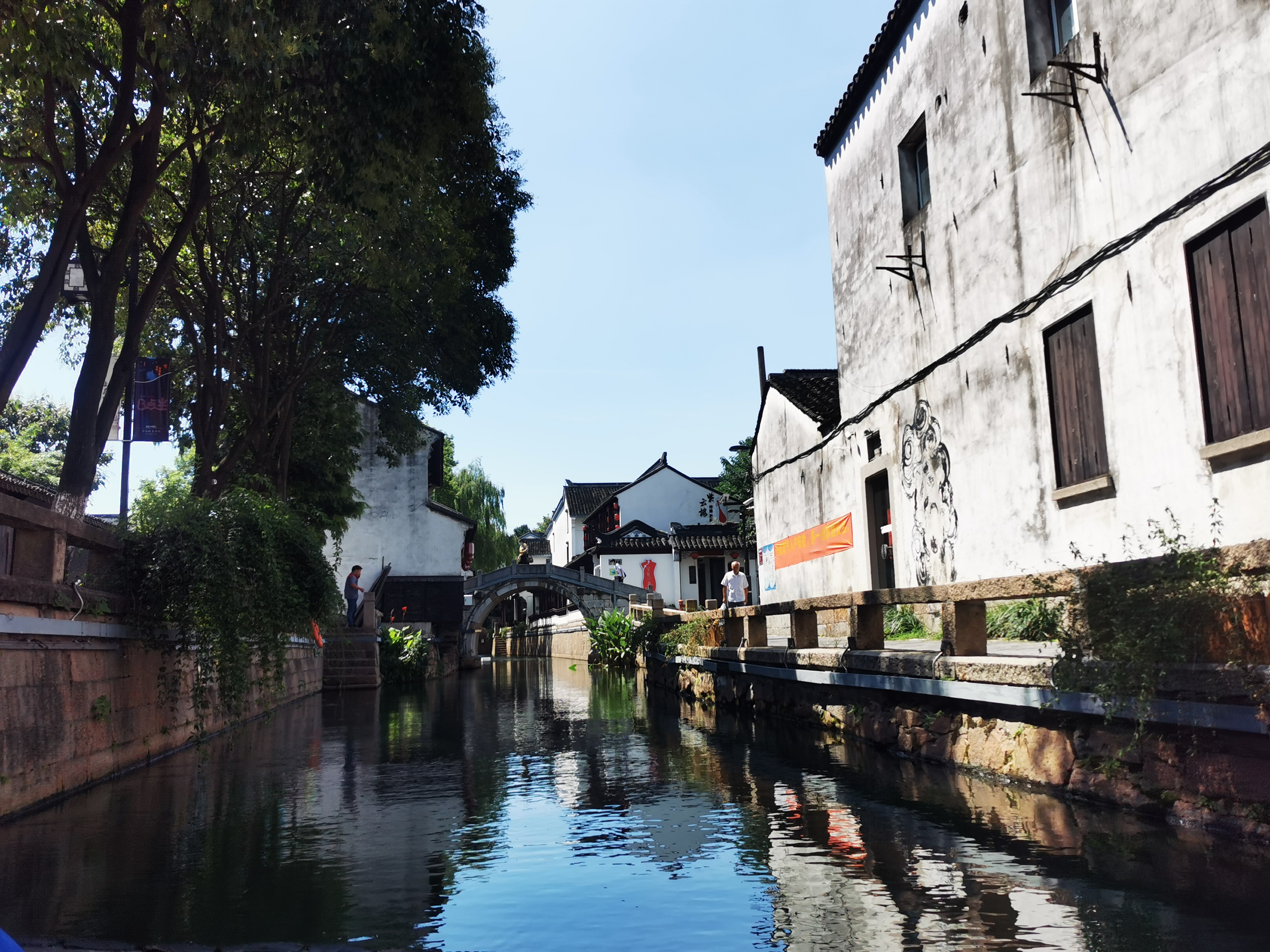24 Hours Hotline: +86 137-3541-1378
Email:shanghai@tripstoshanghai.com
24 Hours Hotline: +86 137-3541-1378
Email:shanghai@tripstoshanghai.com

Overview of Suzhou
"In
heaven, there is paradise. On earth, there are Suzhou and Hangzhou."
Suzhou, Long regarded as a representative of southern small towns in
China since the history of its own written records lasted for 4000
years, 514 BC, is one of the world's leading tourist destinations now.
It is situated on the southern section of the Grand Canal on a generally
flat, low-lying plain between the renowned Lake Tai to the west and the
vast Shanghai metropolis to the east. It is a major economic centre and
focal point of trade and commerce, and the second largest city in
Jiangsu Province after its capital Nanjing.
For
2,500 years the city has miraculously kept the basic layout of its old
town area. Because of its excellent geographical features, specialties
and historic relics, Suzhou has been honored with loads of titles such
as Venice of the East, City of Classic Gardens, City of Literates, City
of Silk and Heaven on Earth. The long history of Suzhou city has left
behind many attractions with beautiful legends. The elegant classical
gardens, the old fashioned houses and delicate bridges hanging over
flowing waters in the drizzling rain, and the exquisite arts and crafts
have made Suzhou a renowned historical and cultural city full of poetic
charm. And its cultural and economic influence throughout the history
has made it one of the most important urban areas in China and the
world.
History of Suzhou
Suzhou,
long regarded as a representative of southern small towns in China
since the history of its own written records lasted for 4000 years, 514
BC, Suzhou has over 2,500 years of history, with an abundant display of
relics and sites of historical interest. At around 100 AD, during the
Eastern Han Dynasty, it became one of the ten largest cities in the
world mostly due to emigration from Northern China. Suzhou achieved its
fame 1,000 years later, the city began to prosper during the Sui Dynasty
as a result of the construction of the Beijing-Hangzhou Grand Canal.
Since the 10th-century Song Dynasty, it has been an important commercial center of China. During the Ming and Qing Dynasty, Suzhou was a national economic, cultural and commercial center, as well as the largest non-capital city in the world, until the 1860 Taiping Rebellion. When Li Hongzhang and Charles George Gordon recaptured the city three years later, Shanghai had already taken its predominant place in the nation. Since major economic reforms began in 1978, Suzhou has become one of the fastest growing major cities in the world.

Administration Distribution
Suzhou
is composed of Suzhou Downtown and 5 country-level cities. And Suzhou
Downtown contains five Districts: Gusu, Xiangcheng, Wuzhong, Wujiang,
and Huqiu New Hi-tech District. 5 country-level cities are Changshu,
Taichang, Kunshan, Zhangjiagang.
Suzhou culture
Suzhou
culture is a rich tapestry of history, geography, local customs, unique
living styles, literature and art, morals, mindsets and values. It is
the core of Wu culture.
Wu Culture and Suzhou Culture
Wu,
also called Wuyue, is a region in the Jiangnan area (the south of the
Yangtze River), surrounding Suzhou, in the Jiangsu and Zhejiang
provinces of China. The culture of Wu is the abbreviation of the
regional culture of Wu State founded in the period of Spring and Autumn.
It extensively means the all-inclusive achievements of local people of
current main parts of East China – Wuxi, Suzhou, Changzhou, Jiaxing,
Huzhou and Shanghai, in the aspects of material and spirituality, the
tangible and intangible heritage. It is based on the culture of original
Wu State, and the development through successive dynasties. Up to Ming
Dynasty, it got its highest peak. Since Qing Dynasty, as the declination
of traditional feudal society and the rising of capitalism in China,
the culture of Wu has gradually transformed to modernization from the
traditional style.
The Wu culture
produced a rich tapestry of cultural influences that would shape the
city of Suzhou beyond the cultural period defined by the Wu state
proper. The historic Wu Culture has left Suzhou City with a series of
excellent cultural heritages, such as the classical gardens, the water
townships, the melodic rhythm of Kun Opera and Ping Tan, the Wumen Fine
Arts School, the Suzhou handcrafts and the Jiangsu Cuisine. Each of them
can reflect the locals' essential character-exquisite, mild and
intelligence. In addition, Suzhou produced plenty of literary geniuses
and influences down through history, names such as Lu Ji from the
Western Jin Dynasty (265-316);the famous loyal politician Fan Zhongyan
and the poet Fan Chengda from the Song Dynasty (960-1279); the dramatist
Feng Menglong from the Ming Dynasty; Tang Yin and Wen Zhengming of the
Wu Painting School, both of whom were scholar-artists during the Qing
Dynasty, etc.
Suzhou Silk
Suzhou
is known as the "Paradise on Earth" and also "the hometown of silk".
Suzhou Silk was developed throughout the Paleolithic and Neolithic age
in the Taihu Lake Basin. Forefathers of Suzhou had mastered the
technique of breeding silkworms and spinning silk back in the Spring and
Autumn period. According to "The Records of the Grand Historian" (a
comprehensive history of ancient China) in 519 BC, Wu and Chu kingdoms
were engaged in large scale wars fighting over mulberry trees, which
reflected the important roles of silkworms and mulberry trees in the
economy at that time.The silk products were first transported to the
other regions when the Silk Road originated in Han Dynasty. Silk rapidly
became a popular luxury fabric in the many areas accessible to Chinese
merchants because of its nice texture and lustre. Suzhou became the
center of silk production in China since Tang (618-907) and Song
(960-1279) dynasties, and the city offered most of the silk and relevant
products for imperial families in Ming (1368-1644) and Qing (1644-1911)
dynasties.

Transportation
Suzhou
has become a core city of China's Yangtze River Delta economic zone,
given its high GDP contribution to China. More recently, it has been a
center of the silk trade and a place of gardens and canals. Suzhou has
long been a heaven for scholars, artists, and skilled craftsmen, and
this is still the case today. As a major tourist city, Suzhou is easily
accessible. With a highly developed network of transportation, Suzhou
offers various convenient tools for its visitors, where buses and taxies
are available as well as airplanes and trains connecting this city with
other ones. The railway, highway and inland water transport are all
quite convenient. Zhangjiagang port is the important gateway of Sunan's
open policy, and big ships can be moored here. Travel in and around
Jiangsu is a vacation in itself, whether by plane, train, bus, or even
boat.
How to reach Suzhou
By plane
It
is disappointing that Suzhou doesn't have a passenger airport so far.
The closest airports with flights of use to most tourists are in
Shanghai. There is a closer one in Wuxi, but it serves mostly domestic
flights. Nanjing and Hangzhou are also good choices for transfer stop.
-Via Shanghai
Pudong
International Airport has most international flights and Hongqiao
Airport has mostly domestic flights. They are 120 km (75 mi) and 86 km
(53 mi) away from Suzhou respectively but regular Shuttle buses run
between Suzhou and the airports daily, spending about one hour and forty
minutes to get you where you want to go. The shuttle bus between Pudong
and Hongqiao leaves every 10 minutes from 6am-9pm and costs RMB30 per
person.
-Via Hangzhou
There
are intercity buses between Suzhou and Hangzhou airports. The location
of the waiting room is North of Entrance 5 to the Arrival Hall, first
Level of Terminal Building. Price range is RMB 20 to RMB 30 per person.
-Via Wuxi
Situated
to the southeast of Wuxi, the airport has several domestic and few
international flights . From airport to Wuxi city center (Wuxi train
station) there are infrequent (every 30 minutes) buses, just on the
right side when tourists exit the airport (see blue plate with chinese
characters and timetable for 1,2,3 routes). Allow at least 40 minutes to
ride to Wuxi center and about 15 minutes for a ride between Wuxi and
Suzhou on a high-speed train.
By train
There
are four major train stations in Suzhou: Suzhou Station (Suzhou Zhan),
Suzhou North Station (Suzhou Bei Zhan), Suzhou Industrial Park Station
(Suzhou Yuanqu), and Suzhou Xinqu Station. Suzhou North Railway station
is used for high-speed trains departing to/from Beijing. But it is
situated a bit outskirts. A ride from Beijing to Suzhou usually takes 5
hours. Suzhou Railway Station is located in the northern part of the
city and is a first-class station, providing about 270 trains passing
through the city each day. Trains for major cities like Beijing,
Shanghai, Nanjing, Chengdu, Xi’an, Qingdao, Xining and so on are
available in the station. A train ride to Shanghai takes less than half
an hour while Nanjing is about one hour away. The slower and lower class
T- and K- services from other provinces on their way to Shanghai or
Nanjing generally stop at Suzhou, but if traveling from anywhere within
Jiangsu it is better to take a fast G-train.
By bus
Suzhou
provides long-distance buses for Shanghai and Zhejiang Province. Three
long-distance bus stations are accessible in Suzhou, including the North
Bus Station, located at the east of Suzhou Railway Station, the South
Station, located at the corner of Nanhuan Eastern Road and Yingchun Road
and the West Station, on Jinshan Road. As the largest station, Suzhou
South Bus Station is a modern, clean terminal serving regular shuttles
to Shanghai, Nanjing and Hangzhou as well as most other major
destinations around eastern China. It is located at the south of the
city centre and is connected by many local buses and taxis. Tourists can
arrive at the bus station via buses 29, 30, 31 and 101.Suzhou North Bus
Station is located next to the train station. The station mainly serves
buses to nearby cities such as Wuxi, Zhangjiagang, Changzhou and
Kunshan as well as less-frequent services to other cities including
Nanjing. The station was recently completely rebuilt and is much cleaner
and more spacious than before, and is a smoke-free zone now. All buses
serving the train station also stop at the North Bus Station, and
tourists can walk into the city centre in 20-30 minutes. Suzhou West Bus
Station is on the far edge of the Suzhou New District (north of Suzhou
Amusement Park) and mostly serves nearby towns of little interest to
travellers.
In addition, the China Eastern Airlines City Air Terminal on the intersection of Renmin Road and Ganjiang West Road also has a small terminal for shuttle buses to Shanghai Hongqiao and Pudong airports.
Tour around in the city
Walking
It's
possible to walk around the city although many will find the distances
between some attractions too large to make walking an option. A
leisurely walk may be one of the best ways to travel in the ancient city
of Suzhou. Strolling along Pingjiang Road at dawn and Shantang Street
in the evening, lingering at Huqiu Pagoda in a drizzle and Humble
Admini-strator’s Garden in twilight, visitors can enjoy the beautiful
scenery of Suzhou and be in a peaceful mood. Besides, there are
pedestrian streets such as Guanqian street, Shilu Pedestrian Street,
Dongbei Pedestrian Street, Suzhou Shantang Street, Phoenix Street etc.
Dozens of shopping malls stands along these streets, offering all kinds
of products and satisfying people's various demands. Besides, tourists
can enjoy the delicious Su-style dishes and delicate characteristic
snacks in these areas as well.
By bicycle
Cycling
is a wonderful way to explore the lovely city. There are numerous
places to hire a bicycle, and around the Pingmen Bridge which is on the
east of railway station, many bicycle rental stores are in sight.
Generally, the price is 2 Yuan for four hours, 3 Yuan for five to six
hours, and 5 Yuan for the whole day. And deposits and identity cards are
required for renting a bicycle. The city is laid out in such a way that
several of the gardens and historic attractions can be taken in on a
single tour. Arched bridges spanning the canals are open to pedestrians
and bicycles as well, and there are equally as many cycling lanes
alongside the city streets. And tourists should pay more attention at
major intersections, as motorists are not likely to yield to cyclists.
Travel agents in the city also offer planned multi-leg excursions that
cross from Suzhou to neighbouring villages and towns such as Hangzhou.
By bus
There
are more than 200 city bus lines in Suzhou. The buses can be rather
crowded during rush hours and some of them are not very clean. But buses
running through busy shopping streets or those connecting major scenic
spots are in a good condition and during off-peak hours it is a pleasure
to use them. In addtion, the bigger windows of a bus will offer you a
wider view of the city than taxis. In the tourist city, five special
“tourist” buses, numbered from 1-5, make getting around much easier for
tourists. Within the downtown area, there are more than 120 bus stops
that can be easily recognized by their traditional old Chinese style
pavilion shape, and brown color. Bus fares range from 1 yuan to 5 yuan,
which depends on the length of your journey or whether the bus has air
conditioning. Public buses may not be the most convenient transport
method for foreigners trying to navigate their way around Suzhou. There
is only one bus route with English service in Suzhou, bus No. 89 which
runs through Hui Hailong Station to Zhujiang Community Service Center
Station, from 5:30am to 8:30pm daily.
By taxi
Taking
a taxi is much more expensive than taking a bus, and taxis are a
convenient way to travel in a city, for it may be easy to navigate on
your own. Suzhou has about 4,000 taxis operated by more than 20 taxi
companies, but still it’s not easy to catch a cab during rush hours or
on rainy days. In these difficult cases it’s better to wait at hotspots
like restaurants or bus stops for taxis. The most common taxi models in
the city are Volkswagen Santana 2000, Santana 3000, Santana 4000 and
Volkswagen Passat. Remember to avoid the unlisensed taxis, even if the
driver solicits you. You have no rights if injured in an unlicensed
taxi. The price starts at 10RMB (including 3 km), 3 kilometers after
additional 1.8 RMB for one kilometer, and 5 kilometers after, 50%
no-occupancy surcharge. Waiting for more than 5 minutes, the driver has
to charge you by converting 5 minutes into 1 kilometer. Extra fees have
to pay if you take taxi from 23:00 to 5:00.
By Rickshaw
Suzhou
is the classic Chinese water town and many scenic spots are located in
narrow streets and alleyways where it is hard for a bus or a taxi to
pass through. But don't worry. The rickshaws will make the tour more
convenient. Rickshaws keep the recommended transportation mode from one
scenic spot to another in the old town, where it allows a slow pace of
life among the tourist city’s beautiful gardens and traditional
waterside architecture. The starting price of a rickshaw is 2 Yuan per
person and then 4 Yuan for every additional kilometer. If you want to
hire a rickshaw, the price is 5 Yuan per person for an hour. Remember to
negotiate the price before you get in and don't allow the driver to
change it once you arrive at your destination.
By boat
Suzhou
is often dubbed the "Venice of the East" or "Venice of China". Thanks
to its various rivers and the famed Grand Canal, Suzhou has formed its
own network of water transportation, connecting with Zhangjiagang (a
city in Jiangsu), Liujia (a famous historic old town located in the
Wuzhong District), Changshou and Shimonoseki, Japan. Suzhou Ancient
Canal Tour Company offers night cruises on the city moat. Over 20
historical attractions of Suzhou are united by it, making for an
exquisite night tour. Although day time tours are wonderful, the colors
and lights effects of night tours are incomparable. During the night
tour, travellers can appreciate the lights from the ancient city walls,
Couple’s Garden, and Baodai Bride. The trip circumnavigates the entire
ancient city and will take approximately 80 minutes. Besides, night
cruises on Jinji Lake also provide excellent sights and photo
opportunities of the entire area. Evening boats leave from the Lake
Watching Pavilion and pass by eight top attractive sites: the Lake Side
Avenue, Li Gong Di Commercial Water Street, Peach Island, Ferris wheel,
Expo Center, Science and Culture Center, Linglong Island, and Music
Fountain. The whole trip takes about 45 minutes.
Wechat: Chinaprivatetour
24 Hours Hotline:
+86 137-3541-1378
* Authentic Experiences: Genuine local experiences that immerse you in the true essence of Shanghai and beyond.
* Safety First: Highest safety standards with secure activities and reliable transportation.
* Customizable Tours: Flexible itineraries tailored to your interests and needs.
* Local Expertise: In-depth knowledge of Shanghai and China, offering exclusive insights.
* Professional Guides: Licensed bilingual guides with over 5 years of experience.
* Comfortable Travel: Experienced drivers and well-maintained vehicles for a smooth journey.
* Sustainable Tourism: Commitment to responsible tourism and supporting local communities.
* Customer-Focused: Personalized service and continuous improvement based on your feedback.
* Free Cancellation: Cancel up to 24 hours before travel for flexibility and peace of mind.
* 24/7 Support: Round-the-clock assistance for any questions or help needed.
1 to 1 tailor-made service from our professional travel advisors for the most sophisticated
Constantly excellent reviews for attraction, hotel and service Competitive price
Local experts provide quality tours Best selected knowledgeable local guides Authentic local restaurants
7*24 hours available to create you a worry-free tour. No Hidden Fees and absolutely no pressure to buy. Secured







